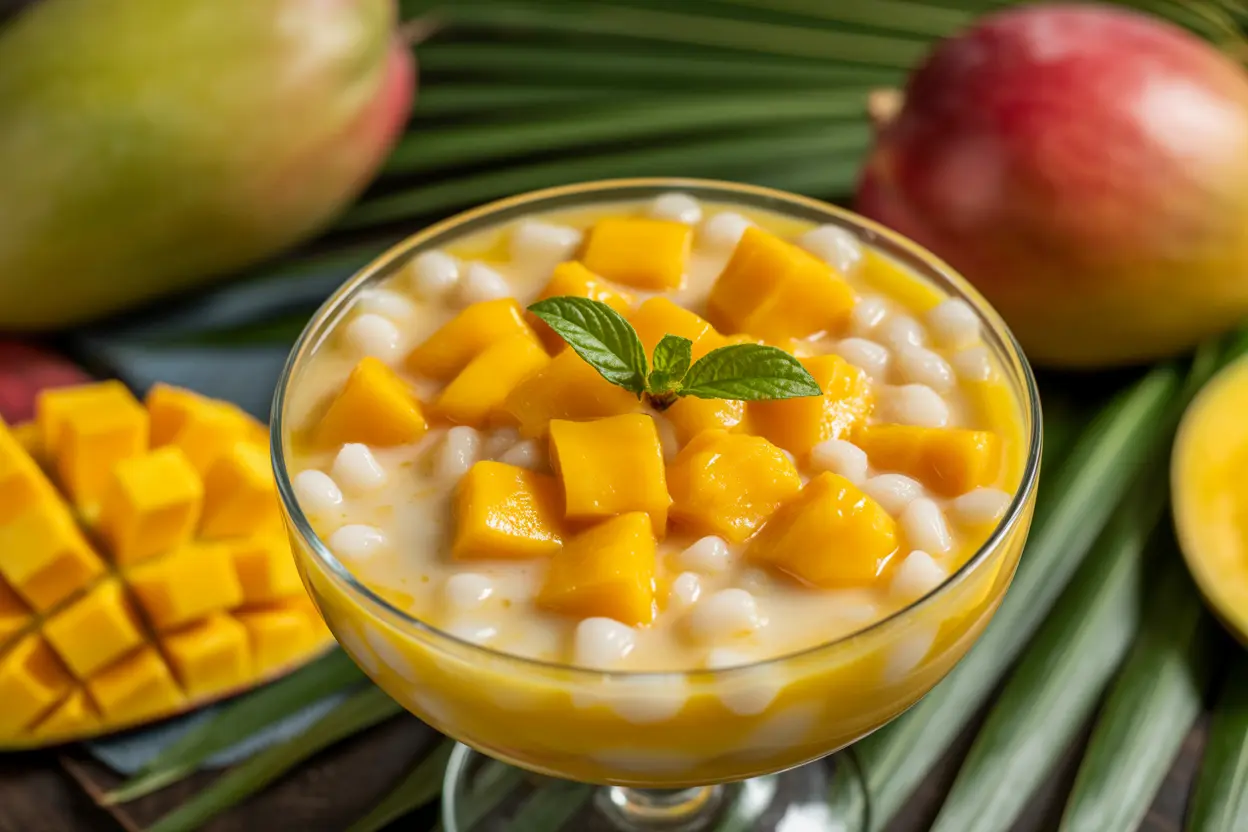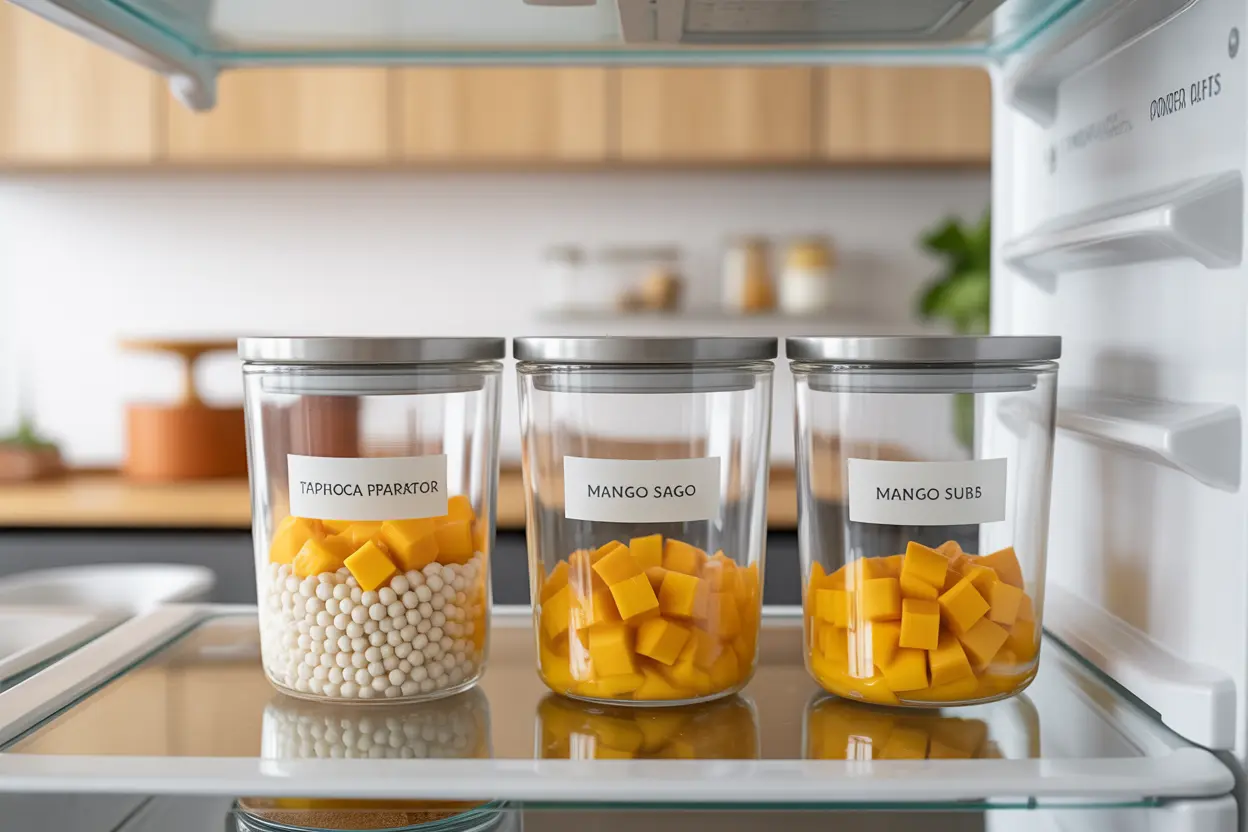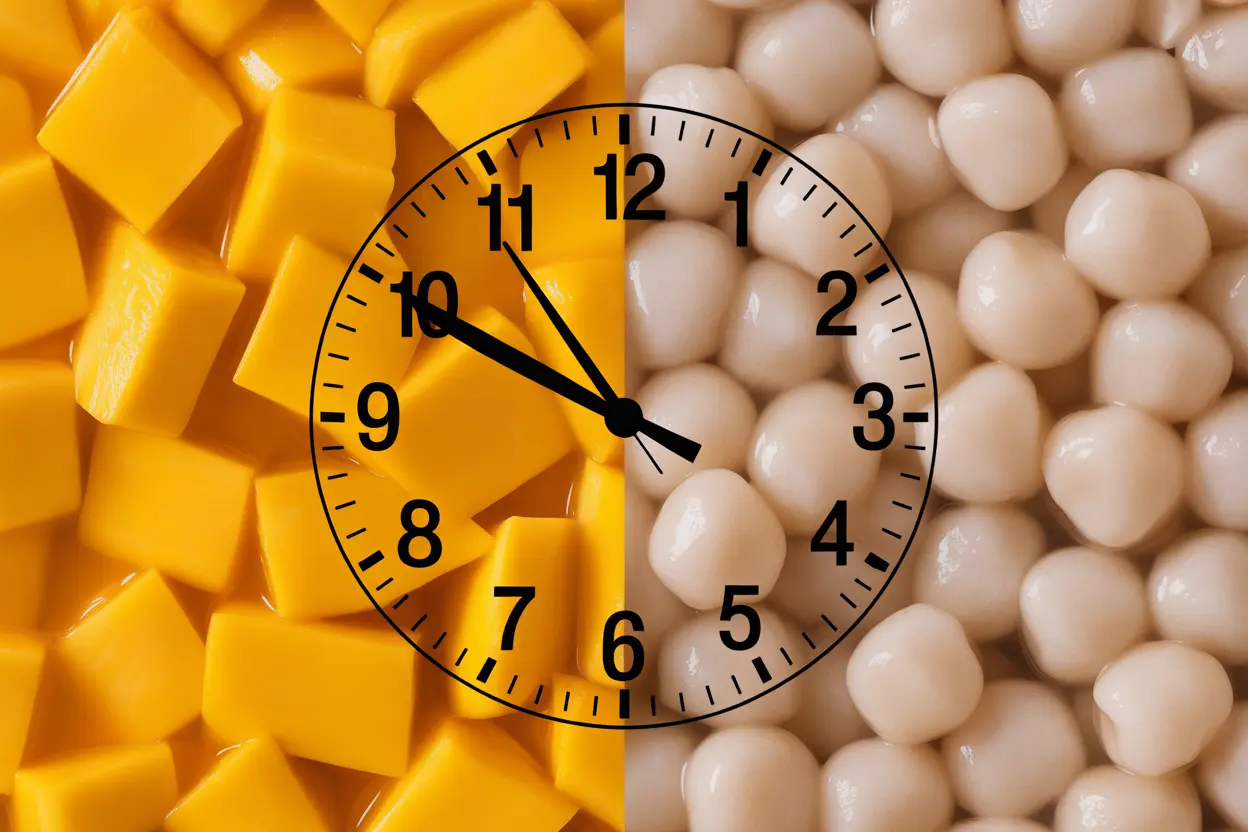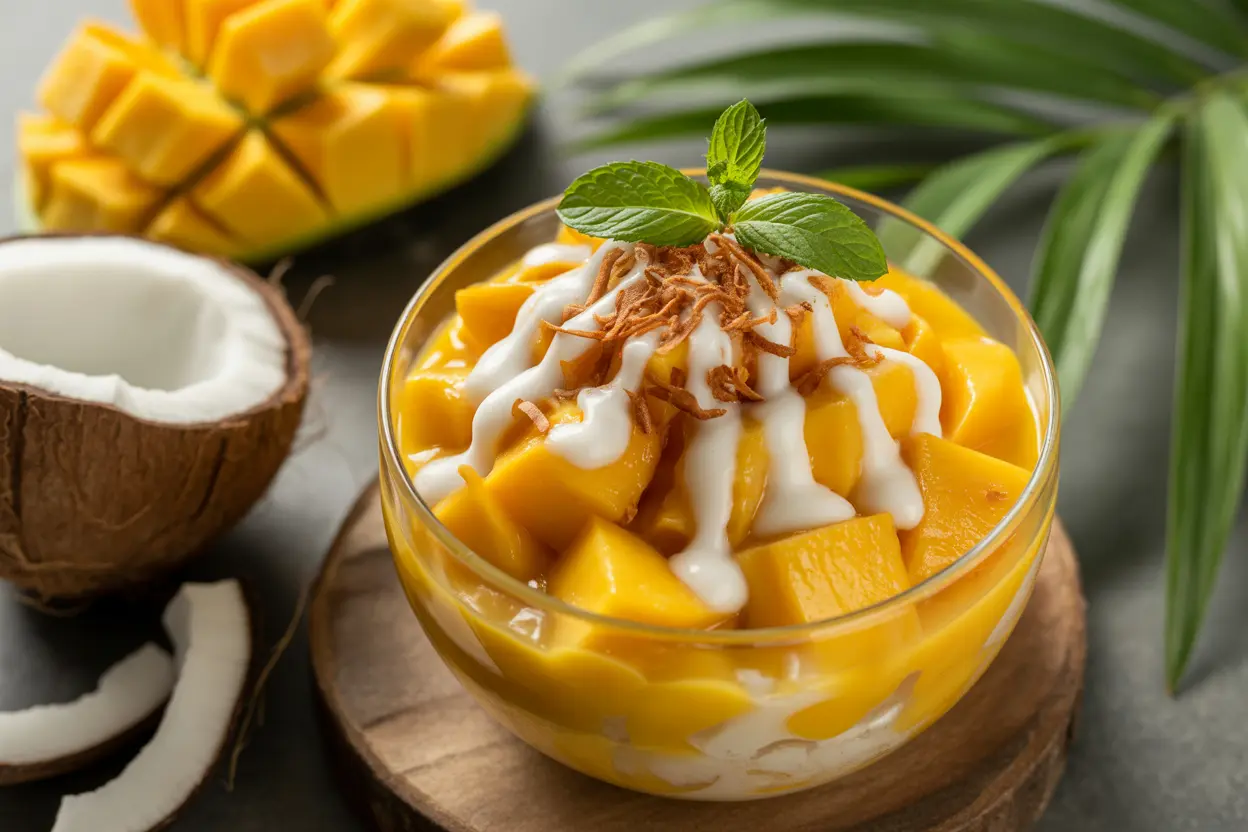Introduction to Mango Sago
What is Mango Sago?
If you love tropical desserts, then you’ve probably come across Mango Sago—a sweet, creamy delight made with ripe mangoes and chewy tapioca pearls. Originating from Asian cuisine, this dessert combines the juicy freshness of mango with the unique texture of soft, translucent sago. But have you ever wondered about the best way for mango sago refrigerator storage? Knowing how to properly refrigerate this dessert is key to preserving its flavor and texture. Whether you’re preparing it ahead of time or storing leftovers, understanding the ins and outs of mango sago refrigerator storage can save you from soggy pearls and bland mango.

Popularity and Cultural Significance
Mango sago isn’t just a treat for your taste buds; it holds a special place in the hearts of many cultures, especially throughout Southeast Asia. It’s often served during festivities and family gatherings because of its refreshing taste and crowd-pleasing appeal. The luscious mango combined with chewy sago pearls offers an irresistible contrast that many dessert lovers cherish. For those curious about its roots and classic preparation, check out this traditional mango sago recipe, which showcases the classic mango sago ingredients. Understanding its cultural significance makes us appreciate why proper mango sago refrigerator storage matters—not just for taste, but for preserving a beloved culinary tradition.
Storing Mango Sago Safely
Can You Keep Mango Sago in the Fridge?
Yes, you absolutely can keep mango sago in the fridge, but it requires some care. Refrigerating mango sago ensures it stays fresh and safe to eat for a couple of days. However, the trick is to maintain the delicate balance between preserving freshness and avoiding texture degradation. According to safe dessert refrigeration methods, storing desserts like mango sago in airtight containers at a consistent cool temperature helps maximize their shelf life without compromising flavor. Remember, refrigeration slows bacterial growth but doesn’t stop the natural changes in texture and flavor, especially of tapioca pearls and fresh mango.
Ideal Storage Containers and Conditions
For optimal mango sago refrigerator storage, use recommended airtight food containers that seal tightly to prevent odors and moisture loss. Glass or BPA-free plastic containers work great. Keep your mango sago away from foods with strong odor to avoid flavor contamination. Refrigerate at about 4°C (39°F) for best results, ensuring it’s served chilled but not frozen.

Shelf Life of Mango Sago in the Refrigerator
Recommended Storage Duration
When it comes to how long mango sago lasts in the fridge, the sweet spot is generally 2 to 3 days. After this window, the quality begins to drop noticeably. The tapioca pearls start absorbing too much moisture, becoming overly soft or even mushy, while the mangoes can lose their vibrancy and freshness. You can find more about how to keep tapioca pearls fresh and maintain texture from expert tips on proper tapioca pearl storage.
How Texture and Flavor Change Over Time
Like a slow dance between mango and sago, refrigeration shifts their harmony. The chewy pearls tend to swell and soften further, losing their pleasant bite. Meanwhile, the mango might become slightly watery, dulling its bright flavor. This is why many dessert aficionados prefer fresh mango sago or store the components separately. Over time, the flavor profile can shift from a vibrant tropical punch to a muted, somewhat watery pudding. This transformation underscores the importance of mindful mango sago refrigerator storage.

How to Maintain the Quality of Refrigerated Mango Sago
Separating Components for Better Freshness
One pro tip for maintaining mango sago freshness is separating the ingredients before refrigeration. Store your tapioca pearls and mango mixture in separate airtight containers. This prevents the pearls from soaking too much liquid and turning overly soft. When you’re ready to enjoy, just combine them. This method mirrors the best practices for storing desserts where components are kept apart to preserve their original texture and flavor, as suggested by many food safety guidelines.
Tips to Restore Texture Before Serving
If your refrigerated mango sago feels a bit flat or the tapioca pearls have lost their springiness, don’t despair! You can gently warm the pearls in a microwave or on the stove with a splash of water or coconut milk to soften them slightly without breaking down their texture. Stir well and chill again before serving to bring back some of that delightful chew. A quick stir often revives the flavor, making your mango sago taste nearly as fresh as when first made.
Why Freezing Mango Sago is Not Recommended
Effect of Freezing on Tapioca Pearls
Freezing mango sago might seem like a convenient way to extend its life, but it’s actually detrimental. Tapioca pearls suffer immensely from freezing; the ice crystals cause them to lose their characteristic chewy texture, turning them hard or fragmented upon thawing. This results in an unpleasant, gritty mouthfeel instead of the soft, bouncy pearls you crave. For detailed insights, explore tips on keeping tapioca pearls fresh.
Alternatives to Freezing Leftovers
Instead of freezing, stick to refrigerating your leftovers in airtight containers and consume them within 2 to 3 days. If you notice spoilage, it’s best to discard any leftovers to avoid health risks. Planning portion sizes ahead can also minimize waste and the temptation to freeze.
Best Practices for Serving Mango Sago
Serving Fresh vs. Refrigerated Mango Sago
Freshly made mango sago is undeniably the star of the show, featuring the perfect texture contrast and bright, juicy flavor. Refrigerated versions, while still tasty, can feel like a shadow of that initial glory if not handled well. To make the most of your refrigerated dessert, serve it chilled but not cold to awaken flavors better. A quick stir before plating can refresh the texture.
Ideas for Garnishing and Enhancing Flavors
Want to jazz up your mango sago? Consider garnishing it with a dash of fresh mint leaves, a sprinkle of toasted coconut flakes, or even a drizzle of lime juice to lift the tropical notes. For an extra creamy layer, a dollop of coconut cream or a few fresh mango cubes can do wonders. These simple garnishes add visual appeal and depth, transforming your dessert from everyday to elegant, making every bite a celebration.

Quick Mango Sago Recipes for Reference
Classic Mango Sago Recipe
For those inspired to make fresh mango sago, check out this Mango Sago Recipe: Easy & Creamy Tropical Dessert. It covers all the essentials—from perfectly cooked tapioca pearls to the luscious mango cream base. This recipe is a solid foundation and offers clear steps to achieve that ideal balance of sweetness and texture that makes mango sago so beloved.
Vegan and Dairy-Free Variations
If you’re looking for a dairy-free or vegan spin, swap out the traditional dairy milk for coconut milk or almond milk. This not only keeps the dessert creamy but introduces an extra tropical aroma that pairs beautifully with mango. The Filipino Mango Sago Recipe offers ideas on how to tweak ingredients for dietary preferences without sacrificing taste.
Common Mistakes to Avoid When Refrigerating Mango Sago
Improper Storage Practices
One common pitfall is storing mango sago uncovered or in non-airtight containers. This exposes it to fridge odors and speed up moisture loss, affecting the overall flavor and texture. Also, mixing ingredients too early before storage often leads to overly soggy tapioca pearls, ruining the dessert’s mouthfeel. Always choose best containers for storing desserts and separate components if possible.
Ignoring Signs of Spoilage
Lastly, don’t ignore the signs your mango sago may have gone bad: off smell, discoloration, or slimy texture are red flags. Eating spoiled dessert is a quick route to foodborne illness. When in doubt, it’s better to toss and make a fresh batch—your taste buds and stomach will thank you!
FAQs
How long can Mango Sago be kept in the fridge?
Mango sago is best consumed within 2 to 3 days when stored properly in an airtight container in the refrigerator. Beyond this period, the tapioca pearls soften excessively, and the mango can lose its fresh flavor. Refrigeration slows spoilage but doesn’t halt it entirely, so timely consumption is key to enjoying the best taste and texture.
Is it safe to eat Mango Sago that has been refrigerated for 4 days?
Eating mango sago refrigerated for 4 days is generally not recommended. After this time, the tapioca pearls likely have an unpleasant texture, and the mango might begin to ferment or spoil. Always check for off smells, discoloration, or texture changes before eating leftovers, and when in doubt, throw it out.
Can Mango Sago be frozen for longer storage?
Freezing mango sago is not advised because the tapioca pearls undergo texture damage from ice crystal formation. This results in a compromised, gritty consistency after thawing. Instead, refrigerate and consume within a few days to keep the dessert enjoyable.
What is the best way to store Mango Sago to keep it fresh?
The best method for mango sago refrigerator storage is to keep the tapioca pearls and mango mixture in separate airtight containers and combine them right before serving. Store at a steady fridge temperature (around 4°C/39°F) and avoid exposure to air to maintain flavor and texture.
How can I improve the texture of refrigerated Mango Sago before serving?
To revive refrigerated mango sago, gently warm the tapioca pearls with a splash of water or coconut milk to soften them slightly, then cool again before serving. Stirring the mixture can also help re-distribute moisture and flavor for a fresher taste.
Conclusion
Mango sago is a delightful dessert best enjoyed fresh but can be safely stored in the refrigerator for up to 2 to 3 days if kept in an airtight container. To maintain the best texture and flavor, it is advisable to store the tapioca pearls and mango mixture separately and combine them before serving. Freezing is not recommended as it adversely affects the tapioca pearls’ texture. Following proper storage practices and some attentive serving tips can help you savor this delicious treat while minimizing waste. For the best experience, enjoy your mango sago chilled with fresh garnishes that elevate its tropical charm.
If you want to try making your own, don’t miss this Mango Sago Recipe: Easy Authentic Tropical Dessert for an inviting start!

1 thought on “Mango Sago Refrigerator Storage: Shelf Life & Tips”